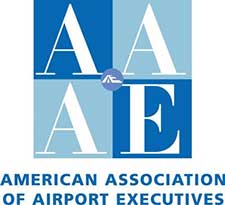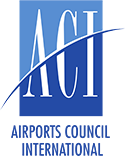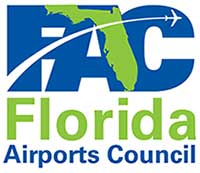Aviation

Artificial Grass for Airport Ground Cover
Through quality-tested products, industry expertise, and professional installation, AvTurf provides a total safety solution for airports around the world. AvTurf’s patented technology offers the ideal balance of safety, efficiency, and durability.
Why We Are the Industry Leaders in Aviation Turf
Experienced synthetic grass installers who are familiar with airport construction environments
First firm to install synthetic turf at an airport
Hold the most patents for aviation synthetic turf use
Offer solutions for runway/taxiway safety areas, infield islands, turf surrounds for light cans, and NAVAIDS
Solve various drainage and erosion situations associated with pavement disaggregation and ensure compliance with 14 CFR Part 139
Offer runway safety enhancements for pilot and ground crews visual delineation
Leaders in conducting laboratory and on-site testing
Offer quick response times for emergency repairs
Extensive warranty plus each installation site is fully insured
Only firm that has the financial backing to stagger billing and accommodate airport budget cycles
Quality You Can Depend On
- Successful worldwide AvTurf installations since 2000
- Certified global construction, installation, and support
- Proven expertise and quality testing
- Demonstrated to last 15+ years in the harsh airport environment

Safety and Operations Benefits
FOD (Foreign Object Debris)
AvTurf synthetic turf helps airport operators easily identify and remove FOD from the artificial turf installation areas.
Bird Strikes
Bird strikes cost the aviation industry $1.2 billion per year. AvTurf allows for an environment free of food, water, and shelter, reducing the potential for bird strikes.
Erosion
AvTurf artificial grass is resistant to erosion caused by jet blast, allowing for a stable area for runway and taxiway shoulders.
Drainage
AvTurf drains at approximately 60 gallons (227 liters) of water per sqft per hour.
A380
Eliminates erosion and FOD from jetwash by extending and stabilizing runway and taxiway shoulders in A380 movement areas.
Wildlife Management
Burrowing species cannot penetrate the synthetic turf backing and are forced to move away from the installation area.
Visual Recognition
AvTurf enhances the visual delineation for pilots and airport ground crew. It can be used for painted infield islands and decommissioned high-speed exits or taxiways in lieu of painted yellow Xs.
Accuracy Landing Circles
Accuracy landing circles can be covered with AvTurf to ensure a noticeable and safe landing for parachuters, paragliders, and skydivers.
Incursions
AvTurf minimizes the need for equipment or personnel to be in or around runway/taxiway safety areas.
Segmented Circles
AvTurf can house segmented circles, an important indication system that provides traffic pattern information to pilots in the air and on the ground.
ARFF Response
AvTurf covered infield islands create a stable area giving emergency response equipment quicker access during all types of weather.
Comprehensive AvTurf Testing
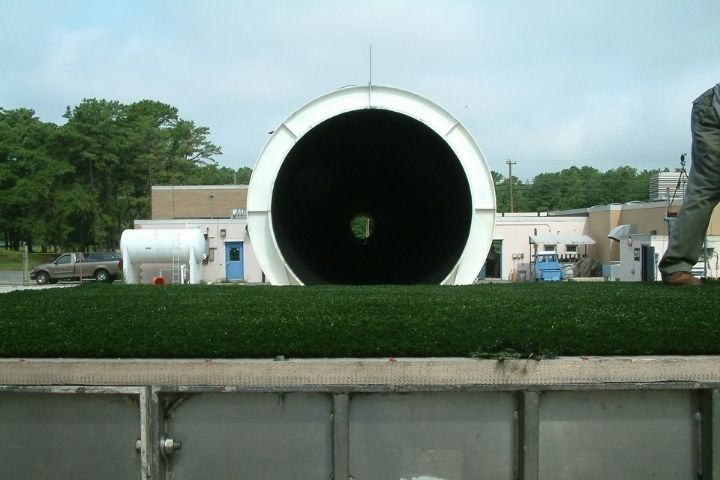
Wind Tunnel
The FAA examined airside applications of synthetic turf and its resistance to jet blast. The results ensured that synthetic turf would not become dislodged or cause foreign object debris (FOD) damage with daily use. An AvTurf test strip was installed at the blast area of a runway at Chicago Midway Airport (MDW). As documented in the June 2006 “Airside Applications for Synthetic Turf” report, the test successfully showed that the AvTurf strip did not display any signs of movement or uplift in both studies.
A test strip was also installed near a helipad at MDW. This test consisted of having helicopters hover-taxi across the top of the surface at low altitudes. This test also successfully showed that there were no adverse effects of this activity on AvTurf.
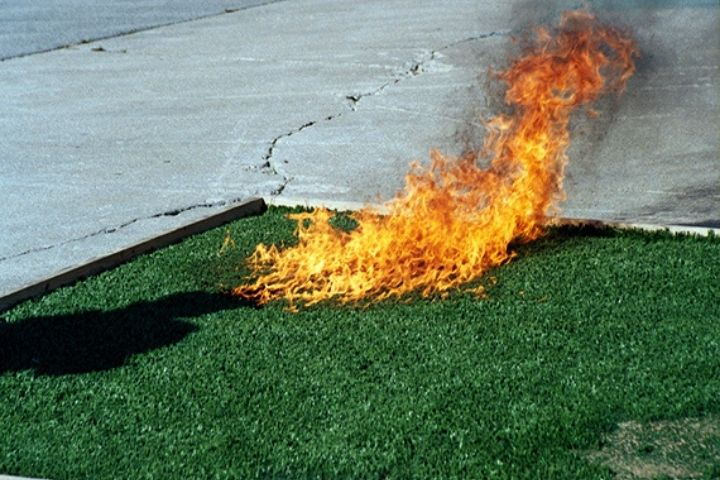
Burn
FAA examined several characteristics associated with airside applications of synthetic turf, including flammability field tests, which were performed in full wind conditions at Chicago Midway Airport on October 12, 2000. Plywood construction test boxes were filled with turf samples atop a dry sand base and a rock sub-base.
Based on what could be expected as fuel spills, aviation grade jet fuel, vehicle-grade diesel, and vehicle-grade unleaded gasoline were poured over nearly half of the sample surfaces. When ignited, the fibers melted away from the flame, thereby limiting the spread of the flame. Even with the force of a 16-knot wind, the flame did not spread beyond the fuel-soaked fibers.
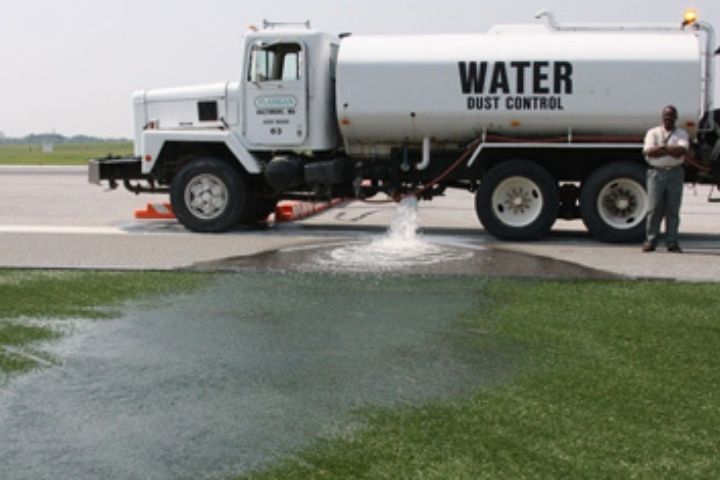
Drainage
Based on testing conducted at the laboratories of the University of Illinois Urbana-Champaign Center of Excellence for Airport Technology Affiliates Program, AvTurf synthetic grass is able to accommodate to the vertical flow of water at high rainfall rates when it is placed over a highly permeable layer. The results from three tests conducted at average rainfall intensities of 5.5 inches per hour dramatically showed that there was practically no surface runoff as the majority of the rainfall passed through the drainage layer beneath the turf. Traces of ponding or surface runoff occurred only when the rainfall intensity rose to 8 inches per hour.
The same type of testing was conducted at an actual installation of AvTurf at Baltimore Washington Thurgood Marshall Airport, where water intensities to simulate rainfall were applied to the synthetic turf. These tests indicated that even after high intensities of rainfall were induced, surface runoff and ponding dissipated immediately as soon as the intensity decreased.
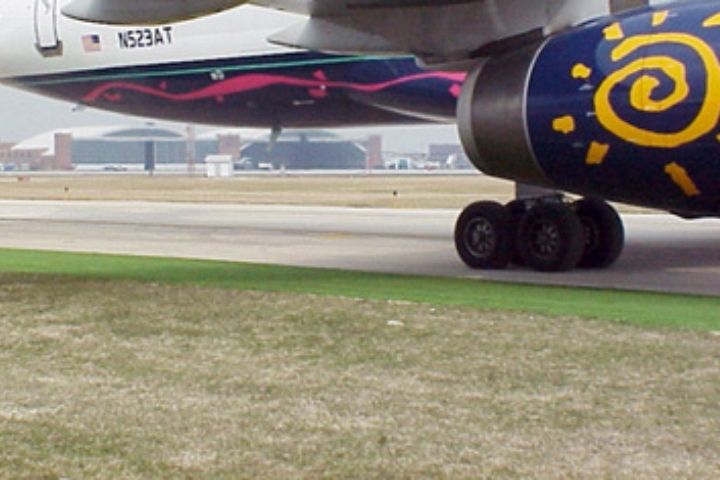
Jet Blast
During the FAA’s examination of the characteristics associated with airside applications of synthetic turf, jet blast resistance was studied. The objective consisted of ensuring that synthetic turf would not become dislodged or cause foreign object debris (FOD) damage with daily use. An AvTurf test strip was installed at the blast area of a runway at Chicago Midway Airport (MDW). As documented in an “Airside Applications for Artificial Turf” report, the test successfully showed that the AvTurf strip did not display any signs of movement or uplift.
Similarly, a test strip of the synthetic turf was also installed near a helipad at MDW. This test consisted of having helicopters hover-taxi across the top of the surface at low altitudes. Additionally, the test successfully showed there were no adverse effects of this activity on AvTurf.
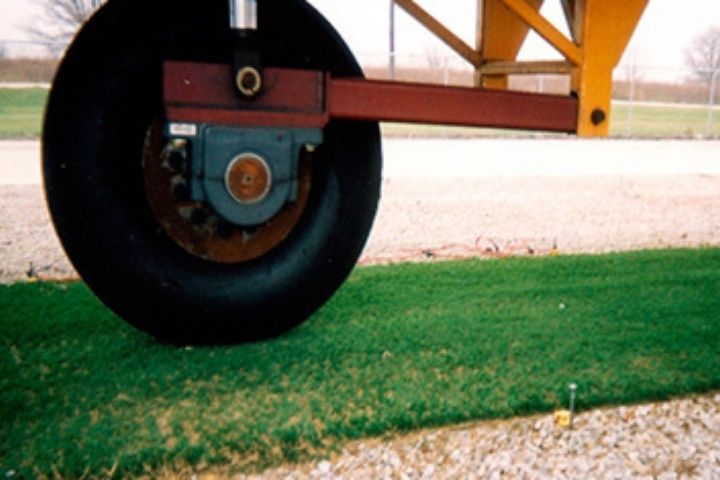
Load Bearing
AvTurf’s Synthetic Grass and Compactable Fill Loading Demonstration to Evaluate Aircraft Arresting Bed Utilization showed that AvTurf’s synthetic grass component consistently maintains the integrity of the base aggregate materials when fill is above 90 percent compaction, and support levels of aircraft and airfield equipment in excess of 100,000 pounds are achieved.
Conducted at the Advanced Transportation Research and Engineering Laboratory in conjunction with the FAA Center of Excellence for Airport Technology at the University of Illinois, the study found that “AvTurf and the properties associated with the patented installation process will mirror the integrity of the compactable fill materials utilized in site specific base installs.” This conclusion is demonstrated in all current AvTurf airfield installations.
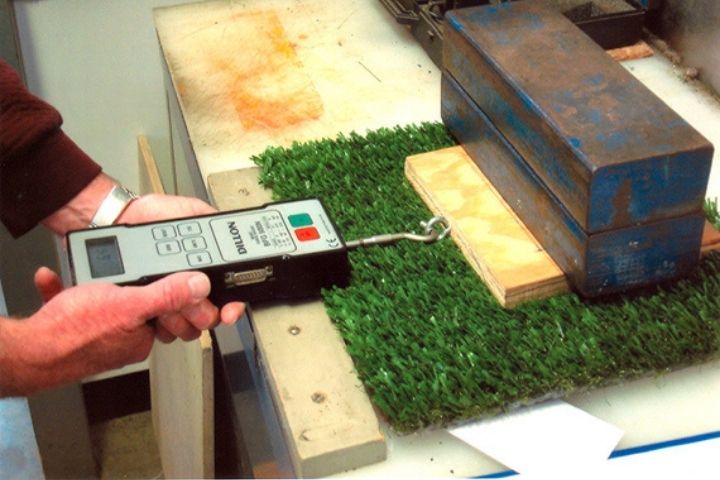
ASTM Testing
In order to comply with the FAA Advisory Circular 150/5370-15B requirement for various laboratory tests to be completed on artificial turf prior to its installation on an airfield, AvTurf has successfully completed all American Society for Testing and Materials (ASTM) and other laboratory tests outlined in the Advisory Circular.
By completing these tests, the AvTurf products are eligible for funding under the Airport Improvement Program (AIP) or Passenger Facility Charge (PFC) Program. Copies of these test results are available upon request.


